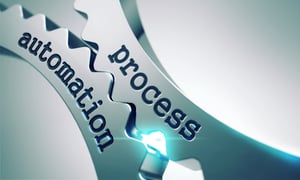 One of the major advantages of AdvicePay is subscription payment functionality. Once you have set up a subscription payment for a client — whether it be monthly or quarterly — the client will approve that payment and those payments will then be made automatically moving forward. Clients are notified seven days before the money is deducted in order to meet various state regulations and the SEC's rule on annual disclosures of fees to avoid inadvertent custody. This happens automatically with each payment instead of once a year, but it will allow you to meet the requirements.
One of the major advantages of AdvicePay is subscription payment functionality. Once you have set up a subscription payment for a client — whether it be monthly or quarterly — the client will approve that payment and those payments will then be made automatically moving forward. Clients are notified seven days before the money is deducted in order to meet various state regulations and the SEC's rule on annual disclosures of fees to avoid inadvertent custody. This happens automatically with each payment instead of once a year, but it will allow you to meet the requirements.
In the past, fee-for-service companies have been at a disadvantage to AUM (Assets Under Management) systems. This is because with AUM, once clients have signed an agreement, the advisor can get paid automatically based on past authorizations. The challenge with fee-for-service billing is that it requires clients to either mail a check or trigger a payment to their advisor, and doing so on a monthly basis is pretty obnoxious.
Software That Works Against You
Let's say an advisor has 20-30 clients. With a manual payment system, each month the advisor needs to invoice clients and then track and reconcile those multiple checks as they come in every month. This is a somewhat archaic way of doing things, especially knowing that there are going to be consistent monthly or quarterly payments. With a large number of clients, this creates a ton of busy work for both the financial advisors and their clients.
Not only is the added work a major issue, but this approach also creates an opportunity for the client to consider every month whether the service they are getting is worth the check they send monthly, rather than viewing the monthly service fee as part of the general cost of yearly services. Manually writing and sending a check monthly re-conceptualizes it from an annual service to a monthly one. An automated system eliminates this issue.
Finding a Compliant Solution
There is no need for you to burden your clients with added paperwork or thoughts about your services on a monthly basis. With AdvicePay, clients can authorize payments so they are billed automatically. They will still be notified seven days in advance of any payments being made, but will no longer need to take action. Additionally, clients will receive payment receipts, which keeps the operation of the system in compliance with laws about triggering custody.
Essentially, AdvicePay has created an opt-out system rather than an opt-in one. It is easily possible to terminate services if a client wants to, but they would have to actively choose to cancel your services. The default is in your favor.
The end result is that AdvicePay makes things much easier for both the client and the advisor, and it will likely increase retention rates because clients are not frequently reminded to pay you. Ultimately, we don’t want clients thinking about paying their advisor; we want it to just happen automatically. AdvicePay provides that solution.
No Comments Yet
Let us know what you think